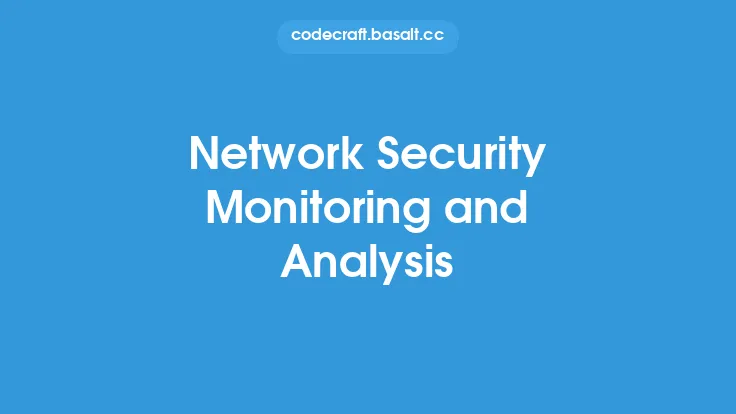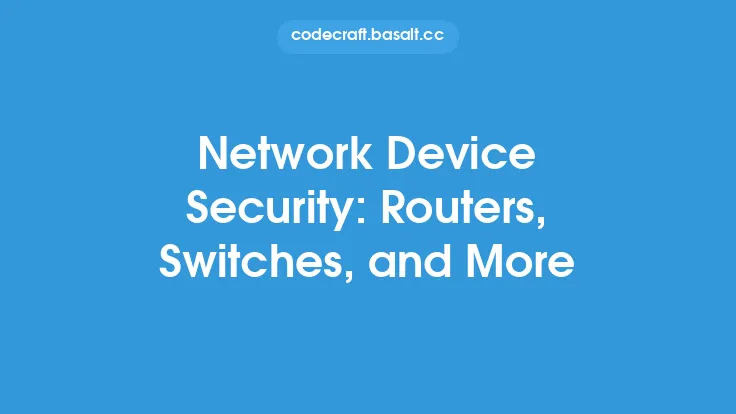Developing and implementing a comprehensive network security policy is a critical component of any organization's cybersecurity strategy. A well-crafted policy provides a framework for protecting an organization's network and data from unauthorized access, use, disclosure, disruption, modification, or destruction. This policy serves as a guiding document that outlines the rules, procedures, and guidelines for network security, ensuring that all stakeholders understand their roles and responsibilities in maintaining a secure network environment.
Importance of Network Security Policy
A network security policy is essential for several reasons. Firstly, it helps to establish a culture of security within the organization, ensuring that all employees understand the importance of network security and their role in maintaining it. Secondly, it provides a framework for implementing security controls and procedures, reducing the risk of security breaches and incidents. Thirdly, it helps to ensure compliance with regulatory requirements and industry standards, reducing the risk of non-compliance and associated penalties. Finally, it provides a basis for incident response and disaster recovery, ensuring that the organization is prepared to respond to security incidents and minimize their impact.
Key Components of a Network Security Policy
A comprehensive network security policy should include several key components. These include:
- Scope and Purpose: A statement outlining the scope and purpose of the policy, including the networks and systems covered.
- Roles and Responsibilities: A description of the roles and responsibilities of all stakeholders, including employees, contractors, and third-party vendors.
- Security Controls: A description of the security controls and procedures in place to protect the network, including firewalls, intrusion detection and prevention systems, encryption, and access controls.
- Incident Response: A plan outlining the procedures for responding to security incidents, including incident detection, containment, eradication, recovery, and post-incident activities.
- Compliance: A statement outlining the regulatory requirements and industry standards that the organization must comply with, including HIPAA, PCI-DSS, and GDPR.
- Training and Awareness: A plan outlining the training and awareness programs in place to educate employees on network security best practices and procedures.
Policy Development Process
Developing a network security policy involves several steps. These include:
- Conducting a Risk Assessment: Identifying the potential risks and threats to the network, including unauthorized access, malware, and denial-of-service attacks.
- Defining Security Requirements: Defining the security requirements of the organization, including the level of security needed to protect sensitive data and systems.
- Developing Policy Statements: Developing policy statements that outline the rules, procedures, and guidelines for network security.
- Reviewing and Revising: Reviewing and revising the policy to ensure that it is comprehensive, accurate, and up-to-date.
- Approving and Publishing: Approving and publishing the policy to all stakeholders, including employees, contractors, and third-party vendors.
Implementation and Enforcement
Implementing and enforcing a network security policy involves several steps. These include:
- Assigning Responsibilities: Assigning responsibilities to stakeholders, including employees, contractors, and third-party vendors.
- Providing Training and Awareness: Providing training and awareness programs to educate employees on network security best practices and procedures.
- Monitoring and Auditing: Monitoring and auditing the network to ensure compliance with the policy and to detect security incidents.
- Enforcing Consequences: Enforcing consequences for non-compliance, including disciplinary action and termination.
- Reviewing and Revising: Reviewing and revising the policy regularly to ensure that it remains comprehensive, accurate, and up-to-date.
Best Practices for Network Security Policy Development and Implementation
Several best practices can be followed to ensure that a network security policy is developed and implemented effectively. These include:
- Involving Stakeholders: Involving stakeholders, including employees, contractors, and third-party vendors, in the policy development process.
- Using Industry Standards: Using industry standards, including NIST and ISO, to guide policy development.
- Providing Regular Training: Providing regular training and awareness programs to educate employees on network security best practices and procedures.
- Monitoring and Auditing: Monitoring and auditing the network regularly to ensure compliance with the policy and to detect security incidents.
- Reviewing and Revising: Reviewing and revising the policy regularly to ensure that it remains comprehensive, accurate, and up-to-date.
Common Challenges and Mistakes
Several common challenges and mistakes can be encountered when developing and implementing a network security policy. These include:
- Lack of Stakeholder Involvement: Failing to involve stakeholders in the policy development process, leading to a lack of understanding and buy-in.
- Insufficient Training: Failing to provide regular training and awareness programs, leading to a lack of understanding of network security best practices and procedures.
- Inadequate Monitoring and Auditing: Failing to monitor and audit the network regularly, leading to undetected security incidents and non-compliance.
- Outdated Policies: Failing to review and revise the policy regularly, leading to outdated and ineffective security controls.
- Lack of Enforcement: Failing to enforce consequences for non-compliance, leading to a lack of accountability and a culture of non-compliance.
Conclusion
Developing and implementing a comprehensive network security policy is a critical component of any organization's cybersecurity strategy. A well-crafted policy provides a framework for protecting an organization's network and data from unauthorized access, use, disclosure, disruption, modification, or destruction. By following best practices, involving stakeholders, and using industry standards, organizations can develop and implement effective network security policies that reduce the risk of security breaches and incidents. Regular review and revision of the policy, as well as ongoing training and awareness programs, are essential to ensuring that the policy remains comprehensive, accurate, and up-to-date.





